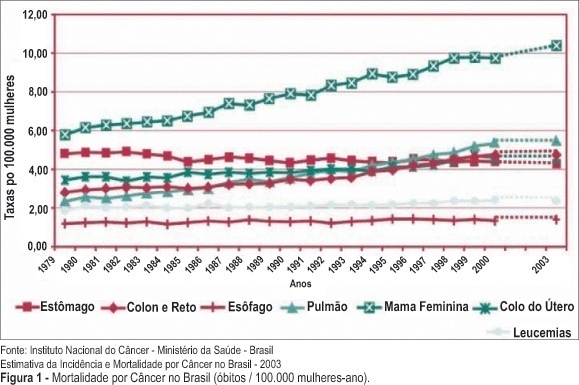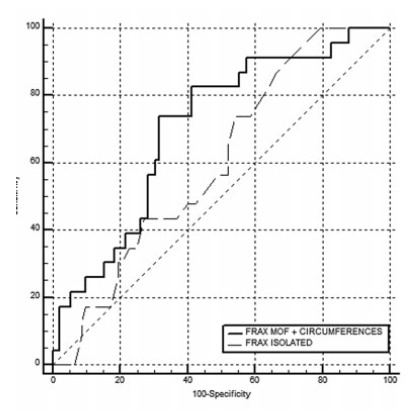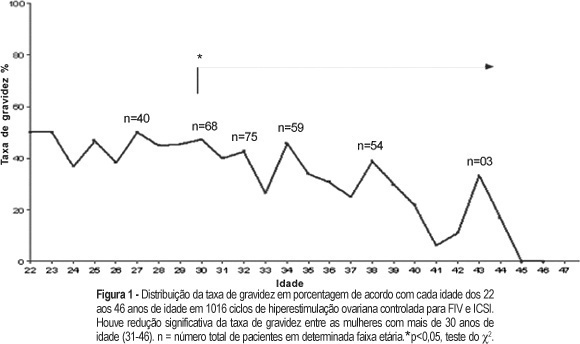Summary
Revista Brasileira de Ginecologia e Obstetrícia. 2006;28(6):319-323

Summary
Revista Brasileira de Ginecologia e Obstetrícia. 2022;44(3):319-324
Summary
Revista Brasileira de Ginecologia e Obstetrícia. 2023;45(6):319-324
Reporting our experience of the management and treatment of Idiopathic granulomatous mastitis (IGM) in a low-income country by describing patients characteristics and therapy with emphasis on conservative surgical excision and postoperative care as the cornerstone of treatment.
A retrospective cohort of women with histopathological diagnosis of IGM from 2014 to 2018 at Instituto Nacional Materno Perinatal in Lima, Peru. Patients' characteristics, clinical presentation, treatment, management, postoperative care, and follow-up were analyzed.
Thirty-eight patients with histopathological diagnosis of IGM were identified. Their average age was 35.9 years and 23 (60.5%) reported previous use of hormonal contraceptives. Nine (23.7%) patients had chronic mastitis with previous treatment. The time from the onset of symptoms to the first clinic consult was 5.1 months on average. Twenty-one (55.3%) patients had the lesion in the right breast, with a mean size of 6.9 cm. Conservative surgical excision was performed in all patients. Additionally, 86.8% required corticosteroids and 78.9% were treated with antibiotics. Complete remission was obtained at 141 days on average (range 44 to 292 days). Six (15.8%) women reported ipsilateral recurrence and 5 (13.2%), contralateral. The latency time was 25.5 months on average.
The conservative surgical treatment demonstrated and close follow-up made for a high cure rate, but with recurrence similar to that reported in the literature. Use of gloves is an alternative to manage post operative wounds in a low-income country. The most frequent adverse effect was breast surgical scar.
Summary
Revista Brasileira de Ginecologia e Obstetrícia. 2022;44(1):32-39
To evaluate the improvement in screening accuracy of the Fracture Risk Assessment Tool (FRAX) for the risk of developing osteoporosis among young postmenopausal women by associating with it clinical muscle mass measures.
A sample of postmenopausal women was submitted to calcaneal quantitative ultrasound (QUS), application of the FRAX questionnaire, and screening for the risk of developing sarcopenia at a health fair held in the city of São Bernardo do Campo in 2019. The sample also underwent anthropometric measurements, muscle mass, walking speed and handgrip tests. A major osteoporotic fracture (MOF) risk ≥ 8.5% on the FRAX, a classification of medium risk on the clinical guideline of the National Osteoporosis Guideline Group (NOGG), and a QUS T-score ≤ -1.8 sd were considered risks of having low bone mass, and QUS T-score ≤ -2.5sd, risk of having fractures.
In total, 198 women were evaluated, with a median age of 64±7.7 years, median body mass index (BMI) of 27.3±5.3 kg/m2 and median QUS T-score of -1.3±1.3 sd. The accuracy of the FRAX with a MOF risk ≥ 8.5% to identify women with T-scores ≤ -1.8 sd was poor, with an area under the curve (AUC) of 0.604 (95% confidence interval [95%CI]: 0.509-0.694) for women under 65 years of age, and of 0.642 (95%CI: 0.571-0.709) when age was not considered. Including data on muscle mass in the statistical analysis led to a significant improvement for the group of women under 65 years of age, with an AUC of 0,705 (95%CI: 0.612-0.786). The ability of the high-risk NOGG tool to identify T-scores ≤ -1.8 sd was limited.
Clinical muscle mass measurements increased the accuracy of the FRAX to screen for osteoporosis in women aged under 65 years.

Summary
Revista Brasileira de Ginecologia e Obstetrícia. 2018;40(1):32-42
Pregnancy is needed for the perpetuation of the human species, and it leads to physiological adaptations of the various maternal organs and systems. The eye, although a closed space, also undergoes some modifications, most of which are relatively innocuous, but they may occasionally become pathological. For women, pregnancy is a susceptibility period; however, for many obstetricians, their knowledge of the ocular changes that occur during pregnancy tends to be limited. For this reason, this is a important area of study as is necessary the development of guidelines to approach those changes. Of equal importance are the knowledge of the possible therapies for ophthalmological problems in this period and the evaluation of themode of delivery in particular conditions. For this article, an extensive review of the literature was performed, and a summary of the findings is presented.

Summary
Revista Brasileira de Ginecologia e Obstetrícia. 2005;27(1):32-36
DOI 10.1590/S0100-72032005000100007
PURPOSE: to evaluate the prevalence of HIV infection in parturient women from maternity hospitals linked to the Public Health Service in Sergipe state (Brazil) using the rapid test, and to evaluate this strategy to introduce the protocol for adequate management of HIV patients. METHODS: cross-sectional study which included the training of all health personnel and enrollment of every parturient woman admitted to maternity hospitals linked to the Public Health Service of Sergipe in the Northeast of Brazil. They received instructions about HIV perinatal transmission, were asked to undertake the rapid test, independently of their knowledge about their HIV serologic status, and signed the term of free consent. Additional information about antenatal care and obstetric history was obtained. The test used was the DetermineTM - Abbott Laboratories, and we used the Health Ministry protocol for HIV infeccion prophylaxis. A database was created at Epi-Info 2002, and the prevalence was calculated in relation to all tests performed from January 2003 to March 2004. RESULTS: after 9215 performed tests, 39 HIV-seropositive patients (0.42%) were detected. Twenty-three of them (59%) had no previous knowledge about their seropositivity. Two patients that already knew their positive sorology status did not refer this condition to the health persomel. The Health Ministry protocol was used for all positive cases. Antenatal care attendance was high (89%) but only 32.5% of the patients had already been submitted to an HIV serologic test during pregnancy. CONCLUSIONS: HIV prevalence in pregnant women (0.42%) in Sergipe was similar to the average rate in Brazil. A large number of seropositive pregnant women did not know their serologic status at the moment of delivery. This indicates bad antenatal care performance and the necessity to keep using HIV rapid test at the moment of labor and delivery in order to reduce vertical transmission.
Summary
Revista Brasileira de Ginecologia e Obstetrícia. 2006;28(1):32-37
DOI 10.1590/S0100-72032006000100006
PURPOSE: to evaluate the rate of chemically diagnosed pregnancy (serum beta-HCG>25 mIU/mL levels obtained fourteen days after the embryonic transfer) clinically diagnosed pregnancy (gestational sac visualized by ultrasound four to six weeks after the embryonic transfer) and miscarriage rates in women submitted in vitro fertilization to (IVF) and intracytoplasmic sperm injection (ICSI) in a tertiary center of assisted reproduction and to correlate these rates with age. METHODS: retrospective transverse study with analysis of 1016 cycles of controlled ovarian hyperstimulation of 932 infertile women with indication of IVF (370 cycles) or ICSI (646 cycles). The patients' age ranged from 22 to 46 years. All women with age over 35 years included in the study had FSH<15 IU/L. The studied cycles were divided into two groups: the first including the cycles referring to women of 22 to 30 years and the second group, to those of 31 to 46 years. The studied variables were: pregnancy (chemical or clinical) and miscarriage rates. The chi2 test was used to compare these rates between the groups. RESULTS: the total pregnancy rate was 36.42%, with a significant reduction starting at 30 years (p=0.0001). From 22 to 30 years (303 cycles) the pregnancy rate was 45.4%, while in the range from 31 to 46 years (713 cycles), it was 25.1%. The miscarriage rates were, 10.2 11,6%, respectively (p=0.6854). CONCLUSION: although the miscarriage rates did not differ between the groups, a decrease in the pregnancy rate of infertile women submitted to IVF or ICSI was observed after the age of 30 years. Thus, we recommend the gynecologists not to postpone the investigation and the referral for treatment of infertility.

Summary
Revista Brasileira de Ginecologia e Obstetrícia. 2014;36(7):320-327
DOI 10.1590/SO100-720320140004998
Apresentar a adaptação transcultural para o português da Escala de Atitudes em Relação ao Ganho de Peso na Gestação.
Essa escala, que contém afirmações que expressavam diferentes atitudes de gestantes em relação ao seu próprio ganho de peso, foi desenvolvida para determinar se as atitudes em relação ao corpo afetariam o ganho de peso durante a gestação. Os procedimentos foram: tradução, retrotradução, avaliação da compreensão, elaboração de versão final, aplicação da escala em 180 gestantes (média 29,6 anos e idade gestacional 25,7 semanas) e análise psicométrica.
Constatou-se equivalência satisfatória entre as versões inglês-português e boa consistência interna (Alpha de Cronbach 0,7). A análise fatorial exploratória sugeriu quatro subescalas com variância total explicada de 51,4%.
A escala se demonstrou válida e pode ser utilizada em estudos com gestantes no Brasil para avaliação de atitudes em relação ao ganho de peso e detecção e prevenção de comportamentos disfuncionais durante a gestação.